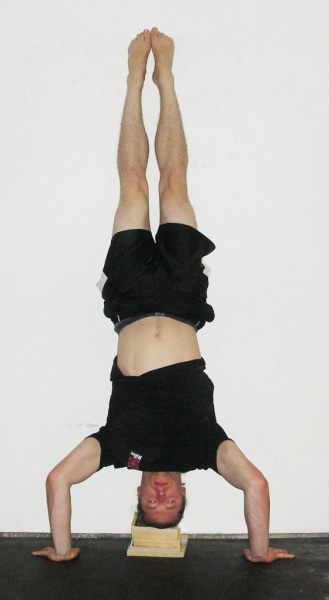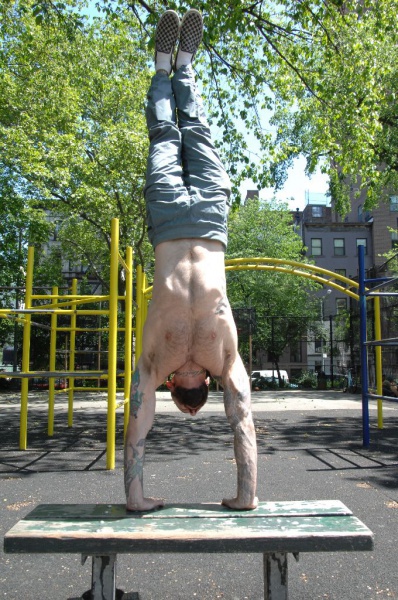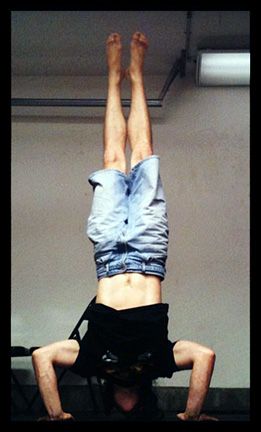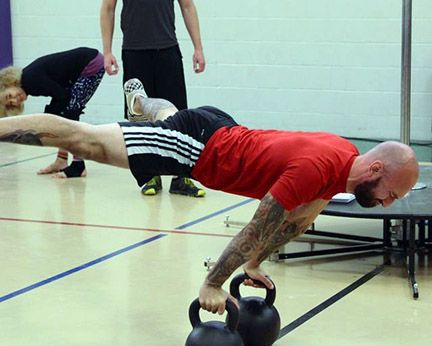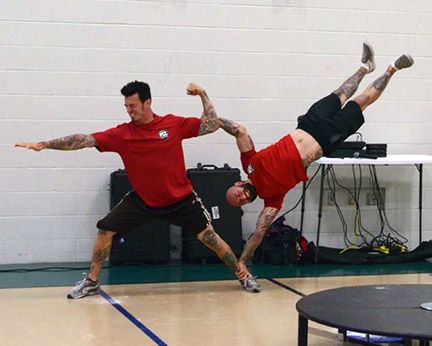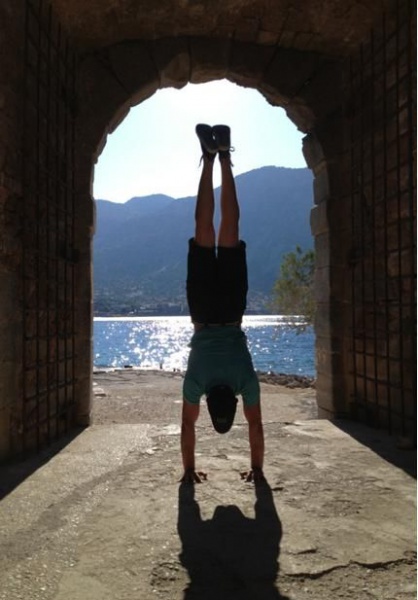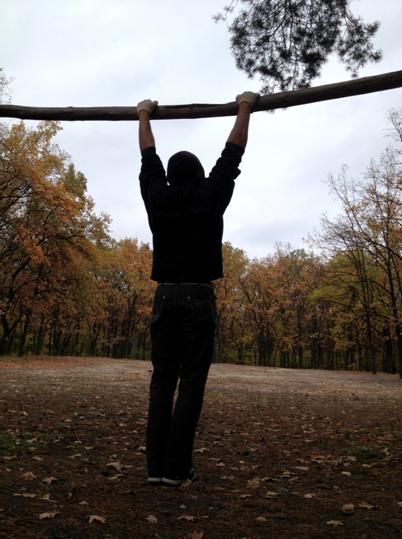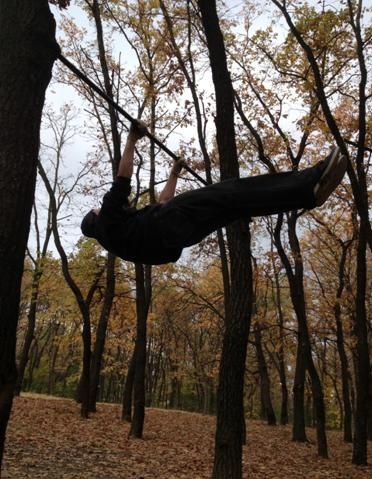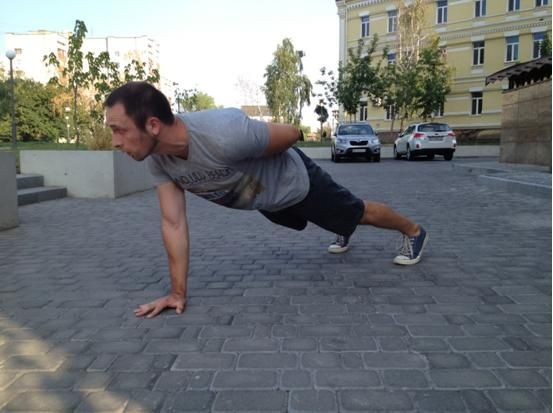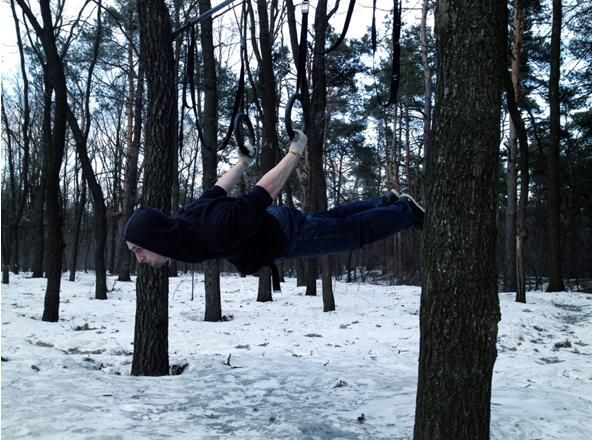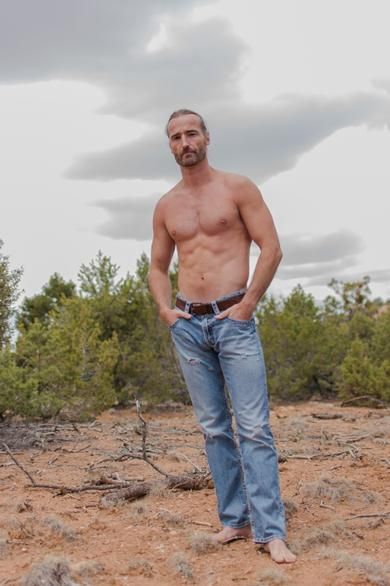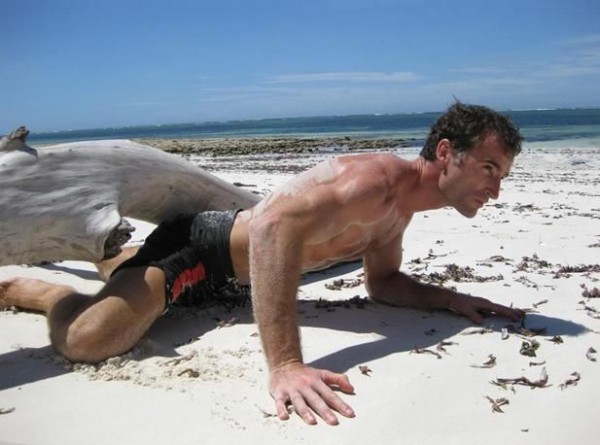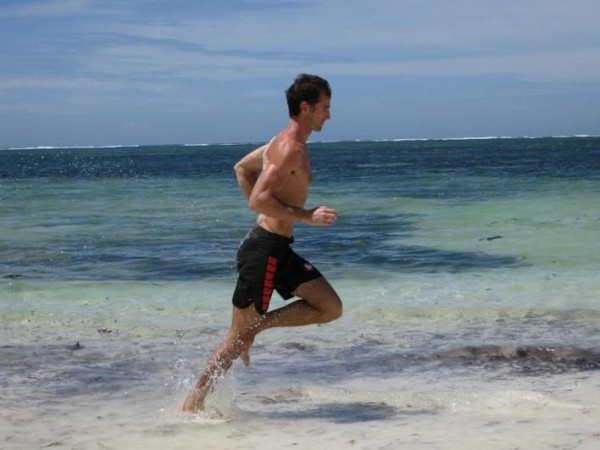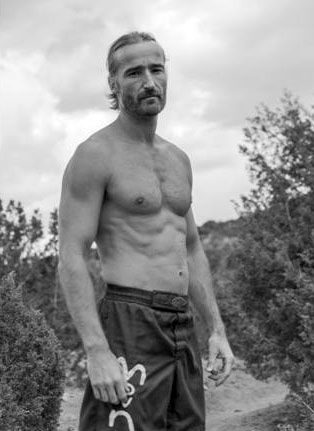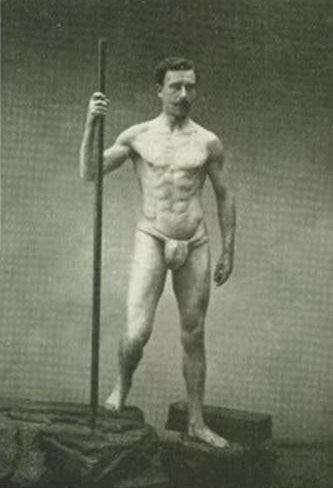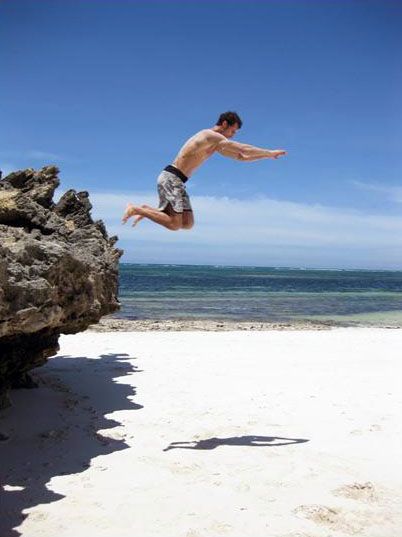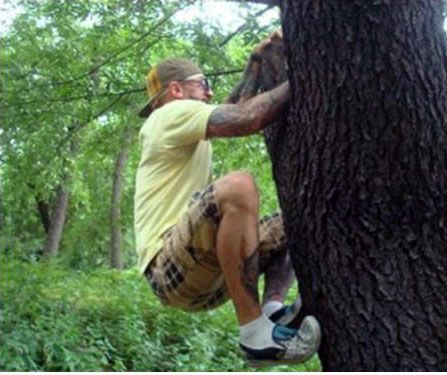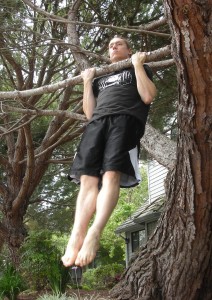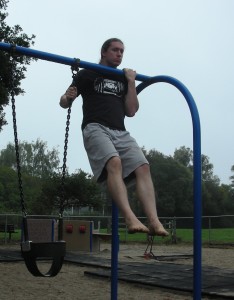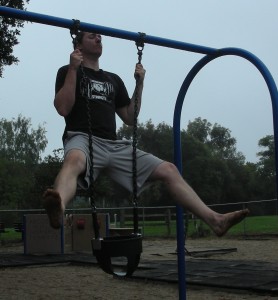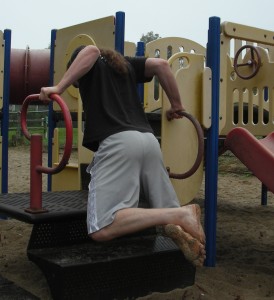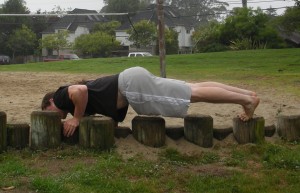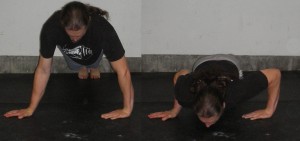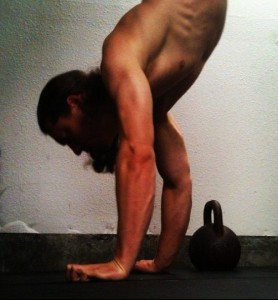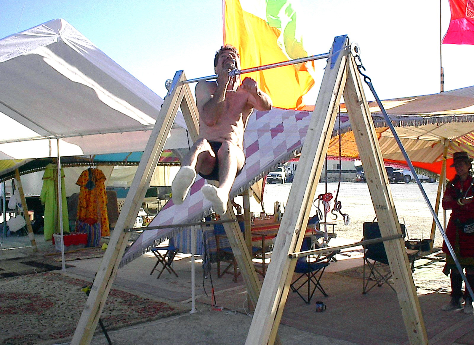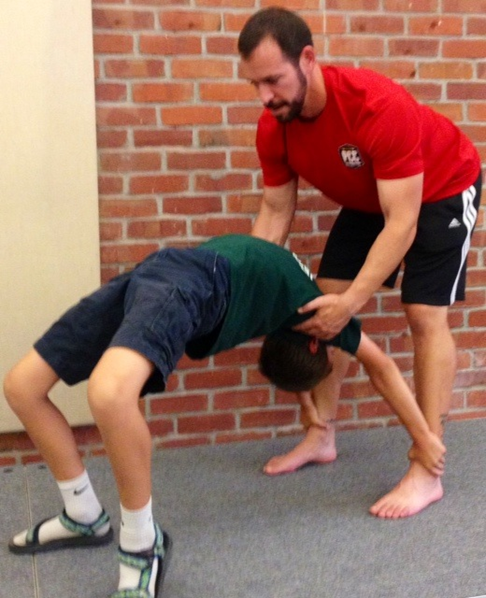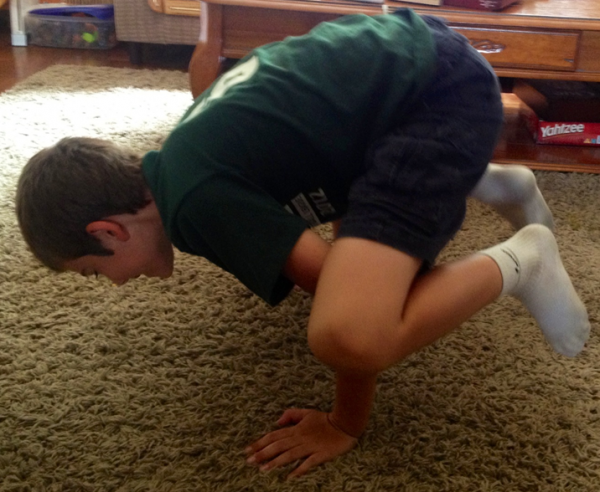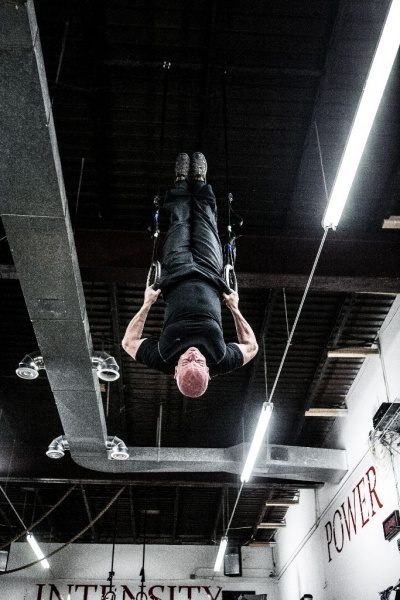 The day after Thanksgiving I showed up to work out at my number one training spot, the iconic jungle gym in the Northeast corner of Tompkins Square Park. I always like to get a serious workout in the day after Thanksgiving to offset the gluttonous amount of savory meats and sweet dessert treats that I’ve consumed during the previous day. Imagine my shock when I arrived at the jungle gym to find that my favorite pull-up bar had gone missing!
The day after Thanksgiving I showed up to work out at my number one training spot, the iconic jungle gym in the Northeast corner of Tompkins Square Park. I always like to get a serious workout in the day after Thanksgiving to offset the gluttonous amount of savory meats and sweet dessert treats that I’ve consumed during the previous day. Imagine my shock when I arrived at the jungle gym to find that my favorite pull-up bar had gone missing!
Well to be honest, I wasn’t that surprised. After all, the bar had gradually been getting loose over the course of the last several months. Since the park reopened in the early ‘90s following the infamous Tompkins Square Park Riot of ‘88, the jungle gym has gradually become one of the most popular outdoor training spots in the NYC area. Even on the coldest winter day, a handful of dedicated loyalists are still out there getting their reps in. Hundreds of pull-ups, muscle-ups and other exercises are performed on that bar every day. It’s taken a beating over the years!
Without my normal pull-up bar available I was forced to improvise a lot of my workout, which often winds up being a good thing. Instead of doing my typical overhand pull-ups, i used the bars on the big yellow monkey bar arch to do pull-ups, which places the hands into a neutral position.
I did muscle-ups on the low bar, which forced me to hold my legs in an “L” to avoid hitting my feet into the floor at the bottom of each rep, adding an extra challenge to an already difficult move.
I still did my handstand push-ups and pistol squats like I normally would. Exercises that require no equipment at all will forever be available to you no matter what!
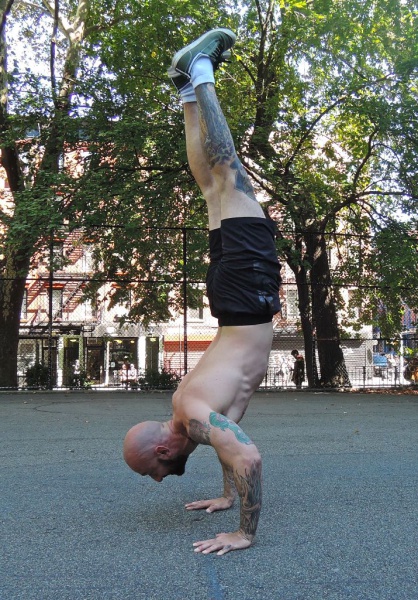 At the end of the workout, I was over my initial disappointment about the missing bar and I actually started to see the whole thing as a blessing in disguise (the endorphin rush from a good training session often gives me better perspective). I’ve always believed that the universe opens a window every time it closes a door. I was looking forward to seeing what other variations I might come up with in future workouts, as it appeared I would no longer have access to the high bar that facilitated so much of my training for so long.
At the end of the workout, I was over my initial disappointment about the missing bar and I actually started to see the whole thing as a blessing in disguise (the endorphin rush from a good training session often gives me better perspective). I’ve always believed that the universe opens a window every time it closes a door. I was looking forward to seeing what other variations I might come up with in future workouts, as it appeared I would no longer have access to the high bar that facilitated so much of my training for so long.
Indeed, the next few times I trained at the park, I continued to work around the missing high bar. My L-Muscle-ups began to get a bit smoother. The neutral grip pull-ups quickly started to feel just as comfortable as the standard pronated grip. I almost forgot there was anything missing. Just when I had fully accepted the situation, things suddenly went back to normal just as quickly as they initially changed.
On Friday, December 13th I showed up to train at TSP and the high bar was back! The bar appears to have been reinforced and it feels more secure than it has in years. The low bar also appears to have been reinforced – an extra bonus! It felt great to muscle-up on that high bar again; it didn’t roll around or squeak at all.
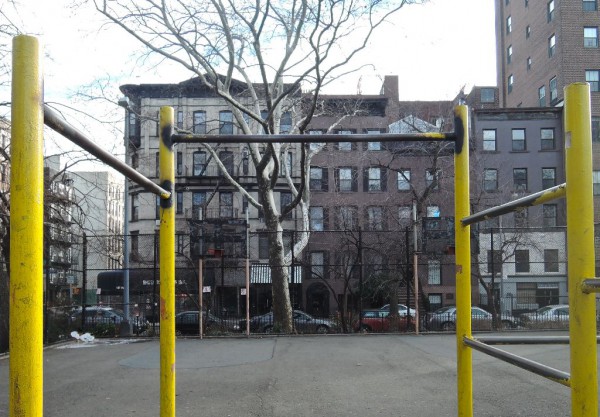 Though it appears to be the very same bar that went missing two weeks prior, the exact details of what happened remain a mystery to me. There are still questions that I may never know the answer to:
Though it appears to be the very same bar that went missing two weeks prior, the exact details of what happened remain a mystery to me. There are still questions that I may never know the answer to:.
Or was it just taken down by the NYC Park’s Department as a precaution until they could properly reinforce it?
And what brought it back? A crafty calisthenics practitioner with some welding prowess? My brother Danny’s phone call to 311? Or maybe it was just a Christmas miracle!
Whether it was the work of the NYC parks dept, a fellow bar athlete or the supernatural, I may never know. However, this much I can say for certain: Pull-up bar or not, it is always possible to have a great workout; our only limitations are the ones we place on ourselves.
And to whoever it was that fixed the pull-up bar at TSP: Thank you!
***
About Al Kavadlo: Al Kavadlo is the lead instructor for Dragon Door’s Progressive Calisthenics Certification. Recognized worldwide for his amazing bodyweight feats of strength as well as his unique coaching style, Al is the author of three books, including Raising The Bar: The Definitive Guide to Pull-up Bar Calisthenics and Pushing The Limits! Total Body Strength With No Equipment. Read more about Al on his website:www.AlKavadlo.com.
